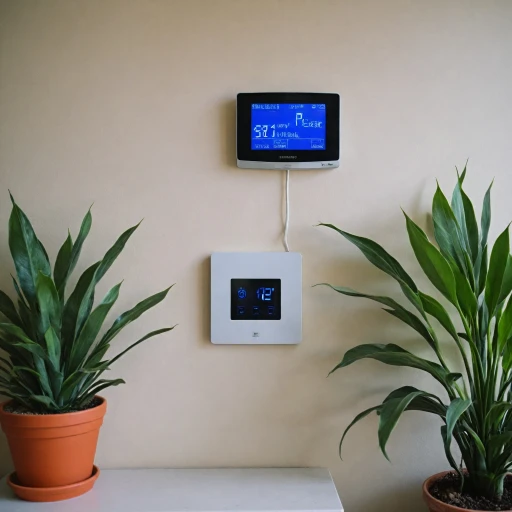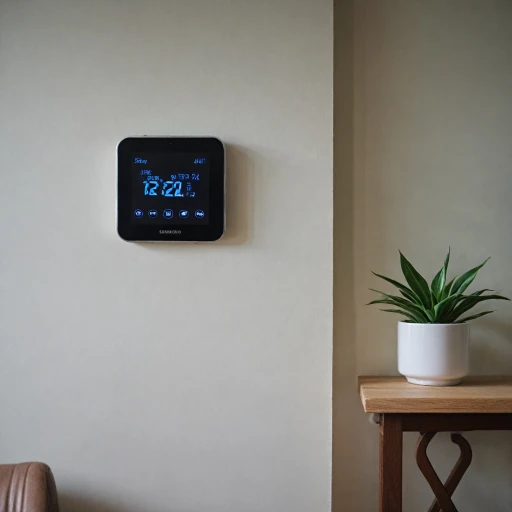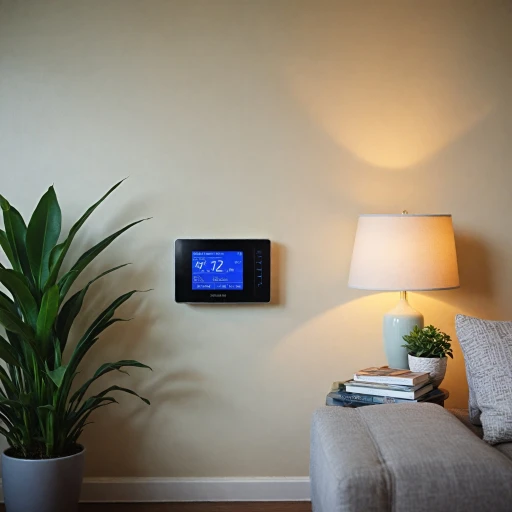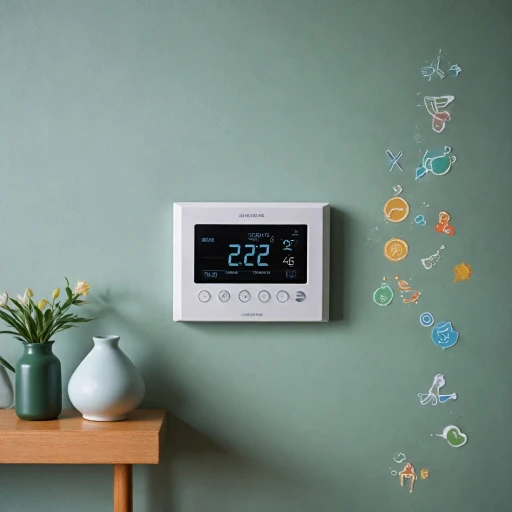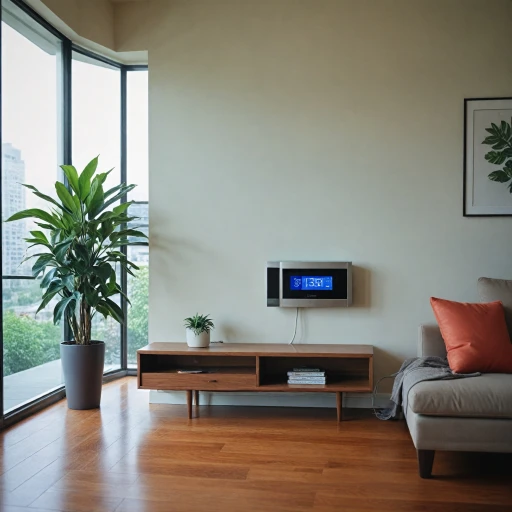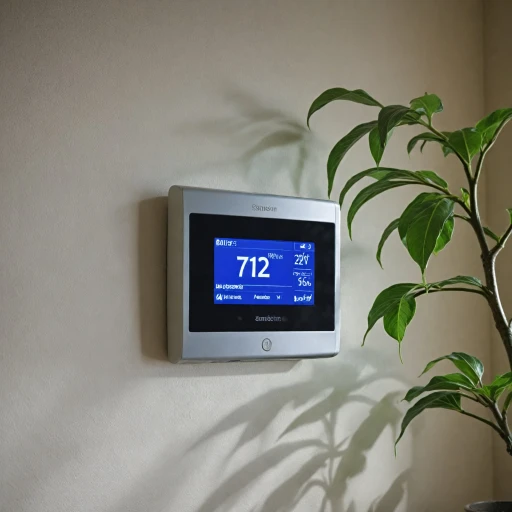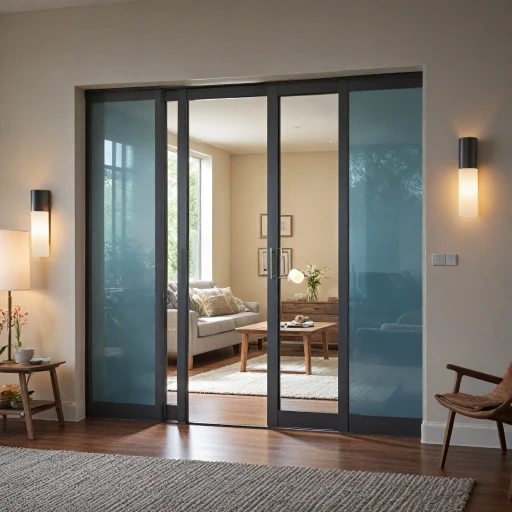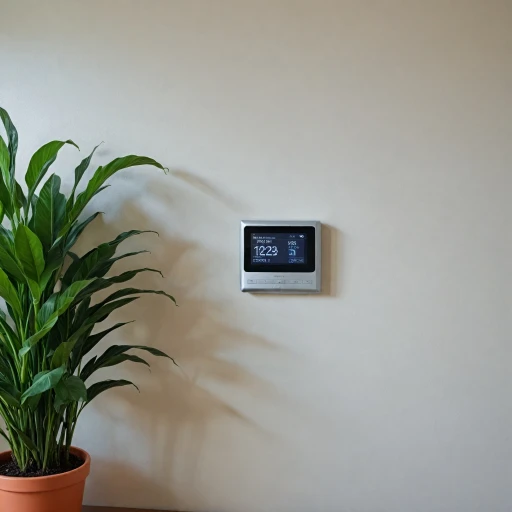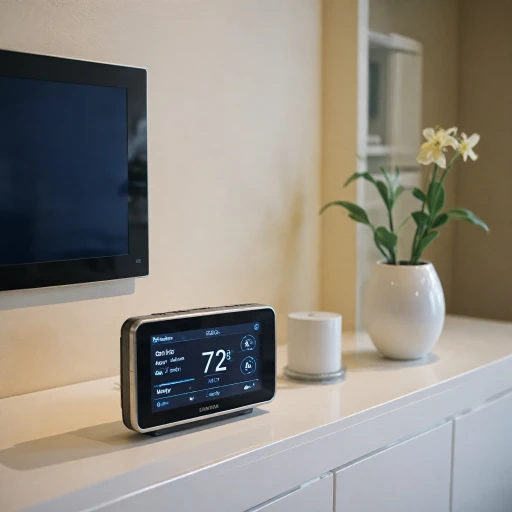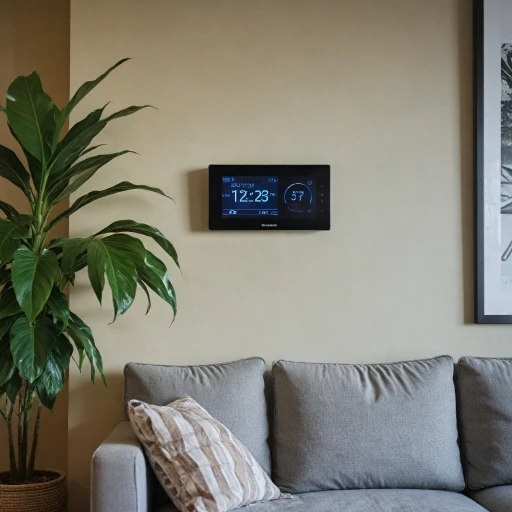
Understanding Smart Thermostats
Unveiling the Potential of Advanced Thermoregulation
Smart thermostats have revolutionized domestic climate management. As intuitive devices, they learn our preferences, optimize energy usage, and seamlessly blend into modern home ecosystems. By embracing these products, homeowners can tap into the futuristic dashboard of their dwelling.
These devices are more than just temperature regulators. They integrate precision detection capabilities, offering a surge in security systems. Imagine syncing your thermostat to ring alarms, alerting you via connected apps of any anomaly. Such integration extends the life of battery-operated security products and elevates your home’s overall resilience.
Smart thermostats stand as guardians against carbon monoxide and smoke invasions. While traditionally, smoke alarms were standalone products, now, a wave series of interconnected devices forms a safety net. A wave device smartly communicates with your thermostat and ensures immediate action when smoke or carbon monoxide fills a room, granting timely alerts.
The stroke width of smart technology is vast but ensuring each device works in harmony is crucial. Incorporate a Mitsubishi Mini Split Thermostat for a seamless experience. It is an essential step in harmonizing your home’s climate control with expansive security measures.
The market, however, presents challenges like price unavailable warnings or unit price fluctuations. Nonetheless, the benefits of these interconnected network devices—such as optimizing battery life and safeguarding against potential risks—far outweigh the upfront costs.
The Role of Z-Wave Technology in Home Automation
Embracing Automation through Z-Wave Integration
The integration of Z-Wave technology with home automation systems offers a seamless way to enhance smart thermostat functionality. As part of a broader wave of smart home innovation, Z-Wave technology facilitates communication between devices, offering a robust framework for connecting and managing smart products. Z-Wave devices, like smart thermostats and smoke alarms, utilize a low-energy radio frequency to communicate effectively within a home network. This energy-efficient communication ensures battery life is optimized, reducing the need for frequent battery replacements in devices such as smoke detectors and carbon monoxide alarms. Implementing a Z-Wave enabled thermostat allows it to interact flawlessly with a variety of home security and safety devices. For instance, when paired with wave smoke alarms or the latest smoke carbon monoxide alarm models, these systems can provide precision detection and coordinated responses to potential threats.- Enhanced Security and Alerts: One of the benefits of using Z-Wave technology is the ability for your smart thermostat to work in conjunction with wave series smoke detectors and carbon monoxide alarms. In the event of an alert, this ensures that appropriate actions can be automatically initiated, such as halting the HVAC system or sending notifications.
- Device Synchronization: Z-Wave devices in a series wave are designed to work together, enabling a streamlined automation experience. This synchronization ensures that when a device, like a smoke detector, triggers an alarm, your entire smart ecosystem is prepared to respond collectively.
- Scalability and Flexibility: Whether starting with a single product or building towards a fully integrated smart home, Z-Wave technology offers the flexibility to add and manage products over time. This means whether you're enhancing home climate control or aiming for comprehensive security, wave devices can fill any requirement.
Integrating Smart Thermostats with Z-Wave Smoke Alarms
Creating Synergy: Smart Thermostats and Z-Wave Smoke Alarms
Integrating smart thermostats with Z-Wave smoke alarms can be a game-changer in today's connected home, offering enhanced security and convenience. By linking these devices, homeowners benefit from coordinated devices collaborating to improve overall home safety and automation. Smart thermostats are already busy optimizing your home's temperature, efficiently reducing energy costs. However, when paired with Z-Wave smoke alarms through the wave network, their capabilities expand further. This integration allows for more rigorous monitoring of home environments, ensuring that potential hazards like carbon monoxide and smoke are dealt with swiftly and efficiently.- Enhanced Home Security: By integrating your smart thermostat with Z-Wave smoke alarms, alerts for potential smoke or carbon monoxide dangers can be communicated directly to your thermostat. This means that, alongside your smoke alarms, your thermostat plays a proactive role in keeping your home safe.
- Seamless Alerts and Notifications: With Z-Wave's precision detection capabilities, any fluctuation in normal air quality will trigger the smoke alarm to alert the network. Notifications can be sent instantly to your smartphone or preferred device, ensuring you're aware of any issue even when you're not at home.
- Battery Life Optimization: One advantage of using wave devices is the efficient battery management. Both smart thermostats and smoke alarms within the Z-Wave series can maximize battery life, reducing the need for frequent replacements and maintenance.
- Interoperability with Other Smart Products: The beauty of a Z-Wave enabled home is the extensive range of products that can work in harmony. Integrating smart thermostats with wave smoke alarm systems can open pathways to connect additional devices like water leak detectors, thermostats, and security systems. This allows a streamlined automation process for the entire home ecosystem.
Benefits of a Connected Home System
Advantages of a Unified Home System
Integrating smart thermostats with Z-Wave smoke alarms offers a range of benefits that enhance both convenience and security in your home. By connecting these devices, you create a seamless network that communicates effectively, providing peace of mind and efficiency.
- Enhanced Security: A connected system ensures that your smoke and carbon monoxide alarms are always in sync with your smart thermostat. This integration allows for immediate alerts in case of any smoke or carbon monoxide detection, ensuring timely responses to potential threats.
- Energy Efficiency: Smart thermostats can adjust heating and cooling based on the status of your home. For instance, if a smoke alarm is triggered, the thermostat can automatically shut down HVAC systems to prevent the spread of smoke, optimizing energy use and safety.
- Remote Monitoring: With the latest wave devices, you can monitor your home’s safety and climate from anywhere. This feature is particularly useful for those who travel frequently or have multiple properties.
- Battery Life Management: Many smart smoke alarms and thermostats come with features that monitor battery life, ensuring that all devices are operational when needed. This proactive approach helps maintain the reliability of your security system.
- Precision Detection: The integration of smart smoke alarms with thermostats allows for more precise detection and alert systems. This ensures that you receive accurate notifications, reducing false alarms and enhancing overall safety.
By leveraging the capabilities of a connected home system, you not only improve your home's security but also enhance its efficiency and functionality. The integration of these smart products creates a cohesive environment that adapts to your lifestyle while prioritizing safety.
Challenges in Smart Thermostat and Smoke Alarm Integration
Overcoming Integration Obstacles
Integrating smart thermostats with Z-Wave smoke alarms presents several challenges that homeowners and tech enthusiasts need to navigate. While the promise of a connected home system is enticing, ensuring seamless communication between devices is not always straightforward.
Compatibility and Communication
One of the primary hurdles is compatibility. Not all smart products are designed to work together, even within the Z-Wave ecosystem. This can lead to issues where a smart thermostat may not effectively communicate with a smoke detector, potentially compromising the security and efficiency of the system. Ensuring that all devices, including carbon monoxide alarms and smoke detectors, are part of the same Z-Wave series can help mitigate these issues.
Power and Battery Life
Another challenge is power management. Many smart devices rely on batteries, and maintaining battery life is crucial for continuous operation. A smoke alarm or carbon monoxide detector with a low battery can fail to alert homeowners in case of an emergency. Regular maintenance and timely battery replacement are essential to ensure that all devices, including smart thermostats, function optimally.
Precision and Reliability
Precision detection and reliability are also critical. Smart smoke alarms and thermostats must provide accurate alerts and maintain consistent performance. False alarms or missed alerts can undermine the trust in these systems. Ensuring that each device is correctly installed and regularly tested will help maintain their reliability and effectiveness.
Cost Considerations
Finally, the cost of integrating these technologies can be a barrier. The unit price of smart thermostats and Z-Wave smoke alarms can vary, and the overall investment may be significant. However, the long-term benefits of enhanced security and energy efficiency often justify the initial expense.

